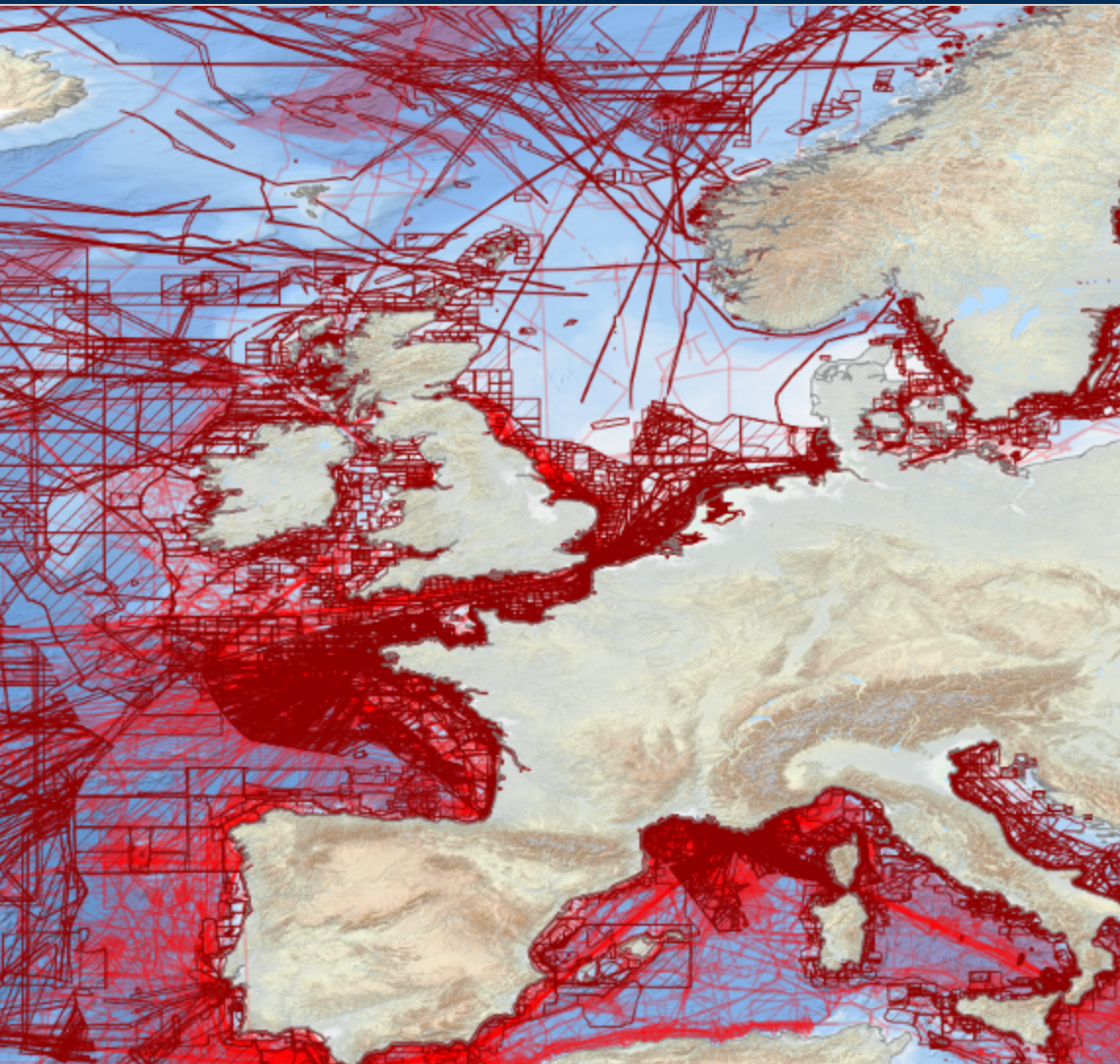Oceans
Type of resources
Available actions
Topics
Keywords
Contact for the resource
Provided by
Years
Formats
Representation types
Update frequencies
status
Service types
Scale 1:
Resolution
-

EMODnet Bathymetry has adopted the CDI Data Discovery & Access service as developed and operated by SeaDataNet, the pan-European network of NODCs, to bring together and provide access to available high resolution bathymetric survey data sets from many data providers, such as National Hydrographic Institutes, Research Institutes, and Survey companies. All bathymetric survey data are described with INSPIRE compliant metadata, following the CDI metadata profile, based on ISO 19115 – 19139 standards. This way, the CDI service gives users a highly detailed insight in the availability and geographical spreading of bathymetric survey data sets that are acquired and managed by an increasing group of data providers and for which users can request access for downloading. The CDI metadata are public domain and freely available for all users. However, a major part of the survey data sets is not freely available and requires negotiation with the data owners. The SeaDataNet CDI search, shopping and tracking mechanism facilitates identifying and requesting access to these background data sets from data providers. Note that all data sets are used internally with permission of the data owners for contributing to the EMODnet Digital Terrain Model (DTM) for the European sea regions. The service URL is : https://geo-service.maris.nl/emodnet_bathymetry/wfs?service=WFS&request=GetCapabilities. The layer in the Map Viewer facilitates users to view the locations of the CDI entries and to retrieve details of individual surveys by clicking on the map. From there users are linked to the actual CDI Data Discovery and Access service (https://cdi-bathymetry.seadatanet.org/search) for performing more queries and submitting requests for data access.
-
EMODnet Physics - TSM_NorthSea - Concentration of total suspended matter (conc_tsm, mg/l) is a product of the Coastcolour L2W Concentrations Data, obtained from the OC4 algorithm for clear and moderate turbid waters, and from the CoastColour v1 neural network.The L2W product was then remapped on a regular grid, maintaining the 300 m full resolution, in order to obtain L3 products over the North Sea and monthly averaged. Developed by EMODnet Physics.
-
This data product is an R Shiny application that discloses the data collected by the National Institute of Oceanography and Experimental Geophysics (OGS) in the North Adriatic-Gulf of Trieste LTER. A time series has been built of observations on the species composition of the plankton. The application shows the evolution over time of abundance of major groups of species, as well as the most frequent species (or other taxonomic units) in the dataset. There is also a multivariate representation based on a PCA of abundances of the most frequent species, which shows the seasonal (monthly) fluctuations and the long-term (yearly) trend, and the contribution of each individual species to the temporal evolution of the community.
-
This data product is a series of gridded abundance maps for 40 zooplankton species from 2007 to 2013 in the Baltic Sea, based on a neural network analysis. As input data a combination of EMODnet Biology datasets were used, together with the environmental variables dissolved oxygen, salinity, temperature, chlorophyll concentration bathymetry and the distance from coast. Additionally the position (latitude and longitude) and the year are provided to the neural network. DIVAnd (n-dimensional Data-Interpolating Variational Analysis) and the neural network library Knet were used in this analysis.
-
Black corals are antipatharian corals that occur from sublittoral to abyssal depths on hard, mixed and soft substrates. Under favourable conditions, some black coral species form dense stands known as black coral gardens which create habitat for a variety of associated species.
-
Circalittoral faunal turfs are animal-dominated shelf assemblages that are found on hard substrata between the lower limit of the infralittoral zone and the shelf edge. Benthic organisms generally form dense intricate mixes that may include tall alcyonarians, sponges, hydroids, scleractinians and gorgonians, as well as less prominent fauna such as encrusting sponges, bryozoans, ascidians, bivalves, solitary cup corals, serpulid worms and vermetid gastropods.
-
Rhodoliths is a general term used to designate non-geniculate coralline red algae (Rhodophyta) that live unattached (Riosmena-Rodríguez, 2017). The term is used here to encompass (i) branched free-living coralline algae devoid of an evident nucleus, but also (ii) nucleated nodules where the biogenic calcium carbonate deposit around the core represents >50%, as well as (iii) “coated grains” where the core is larger than the algal carbonate component.
-
<p>Plankton observations along the South Brazilian Shelf, with a focus on the Cabo Frio Upwelling System. The sampling was done using images generated by an in-situ imaging device, the Lightframe On-Sight Key Species Investigation (LOKI): An underwater camera system designed for vertical hauls for continuous, in-situ imaging of zooplankton. It is equipped with an environmental sensor (CTD) that measured the density of the water column, salinity, oxygen concentration and temperature.</p>
-
This series of products displays the main functional types of benthic macroinvertebrates derived from a multivariate analysis of 13 life history traits. Several occurrence lists from EMODnet Biology were combined. A multivariate analysis of the life history traits revealed three main living modes. All final outcomes were interpolated by DIVAnd, the n-dimensional Data Interpolating Variational Analysis tool.
-
This data product is an R Shiny application that discloses the data collected by the Institute of Oceanography and Fisheries (IZOR) in Croatia, in the Middle Adriatic (Skejic et al., 2015). A time series has been built of observations on the species composition of the plankton. The application shows the evolution over time of abundance of major groups of species, as well as the most frequent species (or other taxonomic units) in the dataset. There is also a multivariate representation based on a PCA of abundances of the most frequent species, which shows the seasonal (monthly) fluctuations and the long-term (yearly) trend, and the contribution of each individual species to the temporal evolution of the community.
 EMODnet Product Catalogue
EMODnet Product Catalogue